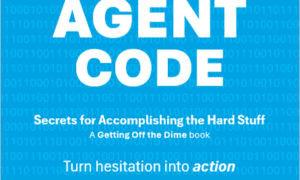Have you ever left a crucial meeting only to realize you missed documenting key decisions? You’re not alone. Studies show professionals spend an average of 23 hours per week in meetings, yet capture less than 40% of important details through traditional note-taking. The constant juggle between active participation and manual documentation leads to fragmented notes, missed action items, and hours spent deciphering handwritten scribbles. Enter AI voice recorders – a revolutionary tool transforming how we capture and process meeting content. These smart devices combine advanced speech recognition with artificial intelligence to deliver accurate transcripts, automated organization, and intelligent insights. In this comprehensive guide, we’ll explore the technology powering these devices, examine their game-changing features, and provide practical solutions for professionals seeking to optimize their meeting documentation. Whether you’re a business executive, project manager, or team leader, discover how AI voice recorders can free you to focus on what matters most – meaningful participation and decision-making.
The Evolution of Meeting Documentation
For decades, professionals relied on basic tape recorders and handwritten notes to document meetings, leading to scattered information and time-consuming review processes. The transition to digital recorders in the 1990s brought marginal improvements but still required manual transcription and organization. Today’s AI-powered voice recorders represent a quantum leap forward, addressing longstanding pain points in meeting documentation. Market analysts project the AI voice recognition market to reach $25 billion by 2025, driven by demand for efficient meeting solutions. This growth reflects the business world’s shift from traditional recording methods to intelligent systems that automatically convert speech to searchable text, identify speakers, and extract key insights. As remote and hybrid work environments become standard, AI voice recorders have evolved from convenient tools to essential productivity assets, transforming how teams capture, share, and leverage meeting content.

Core Technology Behind AI Voice Recorders
At the heart of modern AI voice recorders lies a sophisticated array of technologies working in concert to transform spoken words into actionable data. Leading solutions like PLAUD AI utilize advanced speech-to-text engines that analyze audio waveforms through deep neural networks, breaking down speech patterns into phonemes before reconstructing them into text. These systems leverage machine learning algorithms that continuously improve their accuracy by processing millions of voice samples across different accents, speaking speeds, and environmental conditions. Natural Language Processing (NLP) adds another layer of intelligence by understanding context, identifying sentence structures, and recognizing semantic relationships between words. This enables the software to accurately punctuate transcripts and distinguish between similar-sounding phrases based on their context. Cloud processing capabilities further enhance these devices by providing access to vast computational resources and regularly updated language models. This distributed processing approach not only improves transcription speed but also enables real-time language translation and advanced analytics. The accuracy of these systems has seen remarkable improvement, now reaching up to 95% in optimal conditions, thanks to continuous refinement of acoustic models and the integration of specialized processors designed for AI workloads.
Essential Features for Business Professionals
Advanced Transcription Capabilities
Modern AI voice recorders employ sophisticated speaker identification technology that can distinguish between up to 10 different voices in a single meeting, automatically labeling each speaker’s contributions. The system synchronizes timestamps with the audio, allowing quick navigation to specific discussion points. These devices excel at handling industry-specific terminology through customizable dictionaries and machine learning algorithms that adapt to specialized vocabularies in fields like medicine, law, or technology.
Intelligent Organization Systems
Built-in automated tagging systems categorize recordings by project, client, or topic, eliminating manual filing. The searchable keyword database indexes every word spoken, enabling instant retrieval of specific discussions months later. Seamless integration with popular cloud storage platforms ensures recordings and transcripts are automatically backed up and accessible across your organization.
Cross-Platform Accessibility
These devices offer effortless synchronization between mobile devices and desktop interfaces, ensuring your meeting content is available wherever you work. Native calendar app integration automatically links recordings to scheduled meetings, while granular sharing permissions let you control access levels for different team members or external stakeholders.
Solving Real Meeting Challenges
Need: Accurate and Quick Transcription
To maximize transcription accuracy, position the AI recorder centrally within 3-6 feet of all participants and minimize background noise. Start by conducting a quick sound check before the meeting begins. During recording, use the device’s noise-cancellation features and encourage clear speech patterns. For optimal results, create speaker profiles by having each participant read a short calibration text. When processing transcripts, leverage the real-time mode for immediate feedback during crucial discussions, but switch to post-processing for detailed reports requiring maximum accuracy. Take advantage of built-in editing tools to refine transcripts – focus on proper noun verification, technical terminology, and speaker attribution. Most systems allow you to bookmark key moments during recording for faster post-meeting review.
Need: Organized and Searchable Notes
Establish a consistent digital filing system by creating standardized naming conventions that include date, project, and meeting type. Implement a hierarchical tagging structure using primary categories like client, project phase, and topic, with secondary tags for specific action items or decisions. When archiving meetings, create metadata summaries including attendees, key decisions, and follow-up tasks. Develop search protocols using Boolean operators to combine multiple keywords for precise content retrieval. Maintain version control by implementing a clear revision history system, marking final versions, and archiving previous iterations. Regular backup schedules ensure all meeting data remains secure and accessible, while automated cleanup routines prevent storage overload by archiving older, less-accessed recordings.
Implementation Guide: Maximizing Benefits
Successfully implementing AI voice recorders requires a systematic approach across three key phases. Before meetings, conduct a thorough device setup checklist: verify battery levels, clear storage space, test microphone sensitivity, and ensure all participants have granted necessary recording permissions. Position the device strategically using a room diagram to optimize audio capture, and brief team members on basic operation protocols. During meetings, maintain optimal recording conditions by placing the recorder centrally on a stable surface, activating noise-reduction features, and using visual indicators to show active recording status. Establish clear guidelines for speaker identification and meeting facilitation, including proper muting procedures during breaks. Post-meeting workflows should begin with immediate backup of recordings, followed by systematic review using timestamp markers. Implement a standardized process for transcript distribution, incorporating security measures like encrypted sharing links and access expiration dates. For team adoption, start with small group pilots, gather feedback, and gradually expand usage while providing ongoing training sessions. Create clear documentation for troubleshooting common issues and designate technical champions within each department. Security protocols should include regular permission audits, data retention policies, and compliance checks with industry regulations.
Transforming Meeting Productivity Through AI Innovation
AI voice recorders have revolutionized meeting documentation, transforming it from a tedious manual process into a streamlined, intelligent workflow. These devices eliminate the traditional trade-off between active participation and comprehensive note-taking, delivering accurate transcriptions, automated organization, and invaluable insights. By leveraging advanced speech recognition, machine learning, and cloud processing, modern AI recorders achieve unprecedented accuracy while saving hours of post-meeting documentation time. For business professionals facing increasing meeting demands, these tools represent not just an upgrade but a fundamental shift in how meetings are documented and utilized. The technology continues to evolve, with emerging features like real-time translation, emotion detection, and enhanced integration with project management tools on the horizon. As remote and hybrid work environments become permanent fixtures of the business landscape, implementing AI voice recorders isn’t just about improving efficiency—it’s about staying competitive in an increasingly digital workplace. Take the first step toward transforming your meeting productivity by selecting and implementing an AI voice recorder solution that aligns with your organization’s needs.




























